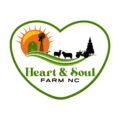Our Chickens
Heart & Soul Farm NC raises several heritage breed chickens on an open pasture, free-range system. Black Australorps, Buff Orpingtons, and Delaware Chickens. We specifically chose these chicken breeds because they met our below criteria:
Lay Medium to Large Brown Eggs
.
Thrifty and Hardy
Heritage Breed
Long, Productive Life
Dual Purpose Meat & Egg
Cold and Heat Tolerant
Exceptional Foragers
Aerial Predator Survival instinct
Benefits of Heritage Breed Chickens
Heritage breeds Chickens thrived on nearly every small family farm from the colonial days up to the early 1900’s. They provided families with eggs and Sunday chicken dinners. They had to be disease resistant, capable of surviving weather extremes, and able to fend for themselves.
The 1940s brought in the Industrialization of modern production chickens. Dual-purpose breeds stepped aside to make way for the new hybrid chickens bred specifically for Commercial Egg Production or Meat Markets. Many desirable traits were disregarded and the modern day hybrids lacked Foraging Ability, Self-Reliance, and Disease Resistance.

Chickens are Essential for Regenerative Agriculture
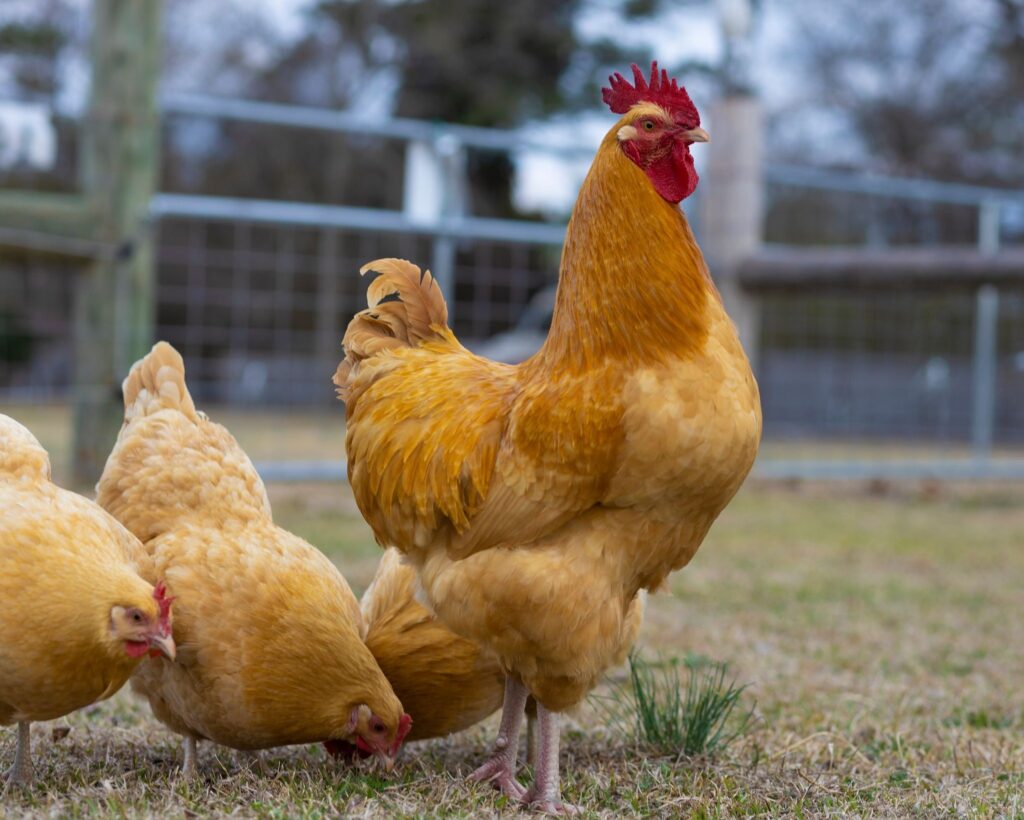
Heart & Soul Farm NC needed self-reliant chickens capable of surviving open pastures and “working” along side our Katahdin Sheep. They scratch and aerate the soil, spread manure, help reseed the livestock pastures, keep the bug and rodent population down, and leave natural nitrogen rich fertilizer behind. Their fertilizer helps grow and regenerate the pastures for the sheep.
The chickens also supply our farm with fresh, free-range, pastured eggs and a sustainable, chemical free meat source.
Delaware Chickens
Delawares have quickly become the most versatile of the breeds we maintain on our farm. They are independent and active foragers. They are quick movers, keenly aware of their surroundings, and predator savvy. We originally brought the Delawares to the farm to be our primary broiler chickens due to their very quick growth rate, but we did not anticipate how self-sufficient they would be and their jumbo eggs are an added perk! They exceeded our expectations so much that they put our former Dominiques out of a job.
Delaware chickens are a heritage breed created in the 1940s to be a fast feathering and fast-growing broiler chicken with white skin. They were not well known on family farms since they had specifically been bred for the commercial broiler industry of the 1940s. When the Cornish crosses became more desirable for their solid white feathers, the Delawares risked extinction. Thanks to the valiant efforts of the Livestock Conservancy Organization and some dedicated farmers, Delaware chickens are now listed as “Recovering.”


Delaware Chicken Characteristics
— Color – white body with black barred plumage on neck and tail feathers
— Dual Purpose -meat and eggs
— Rapid growth makes for excellent broiler chickens
— Laying Age – Approximately 20 weeks of age
— Eggs – 180+ large to jumbo brown eggs per year.
— Low tendency to become broody
— Independent and highly active foragers
— fast moving and predator savvy
— Livestock Conservancy Status: Recovering
Black Australorp Chickens
Black Orpington Chickens were originally created in England but started arriving in Australia during the 1890s. Australians kept refining the breed with the intent purpose of maximizing the egg production, while England was refining the Black Orpingtons to maximize meat production. Australia’s version became known as Australorps to differentiate from England’s Black Orpington.
In 1920s, Australorps started winning top prizes in Egg Laying contests and attracted worldwide attention. The record laying hen laid 364 eggs in a 365 day year!
Australorps hit a steep decline in the 1940s when a new breed, the Austra White, was an even more prolific egg layer and replaced the Australorps in commericial egg production. They were previously listed as “threatened,” but have recovered and graduated from The Livestock Conservancy in 2023.
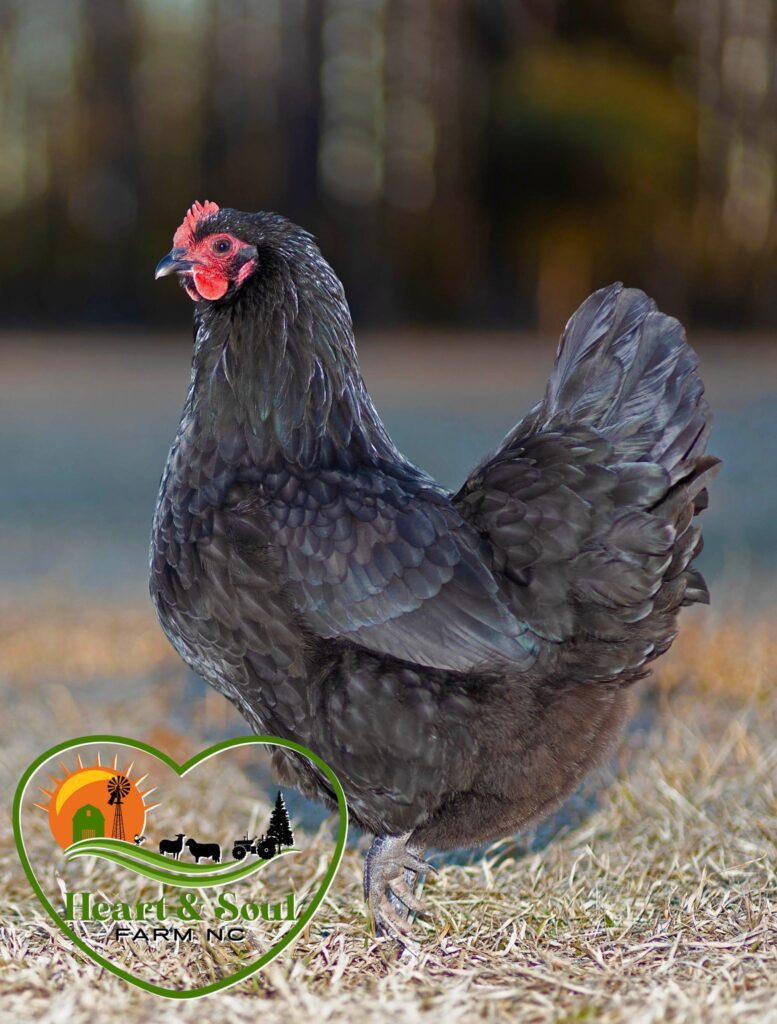

Black Australorp Characteristics
— Color – glossy black feathers with a green sheen
— Dual Purpose -meat and eggs
—Better Layers than most chickens, regardless of season
— Laying Age – Approximately 23 weeks of age
— Eggs – 260+ large brown eggs per year.
— Average tendency to become broody
— Need ample shade in hot climates due to black color.
— Livestock Conservancy Status: Graduated in 2023
Buff Orpington Chickens
In the late 1800s, many dual purpose breeds were arriving in England, but most had yellow skin. The British preferred white skin on their meat chickens. William Cook had a vision to create a hardy, large, fast-growing table bird with white skin and still retained above average egg laying ability.
He made his vision a reality. By 1891, he had succeeded in creating the Buff Orpingtons and they quickly became popular in America up until the industrialized meat and egg poultry production era of the 1940s.
Officially recognized by the American Poultry Association in 1902, they had eventually become endangered like so many other heritage breed chickens. They graduated from the endangered list on the Livestock Conservancy in 2016.
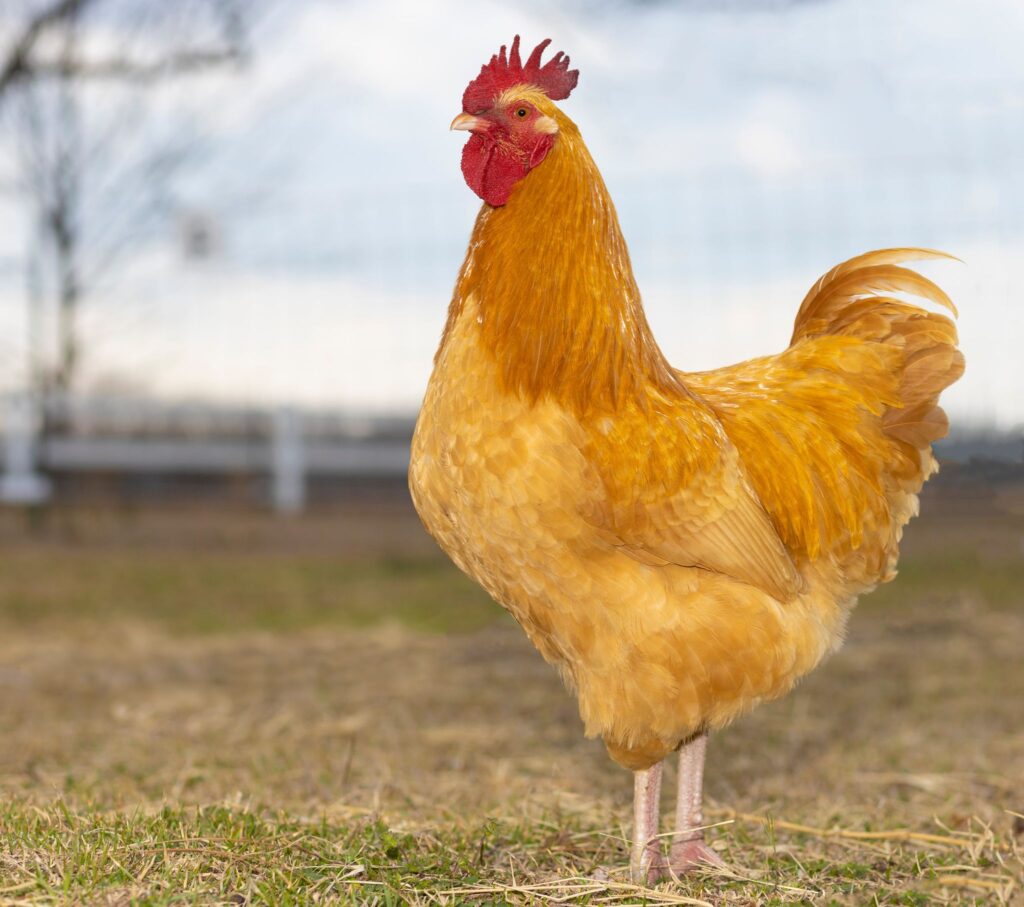
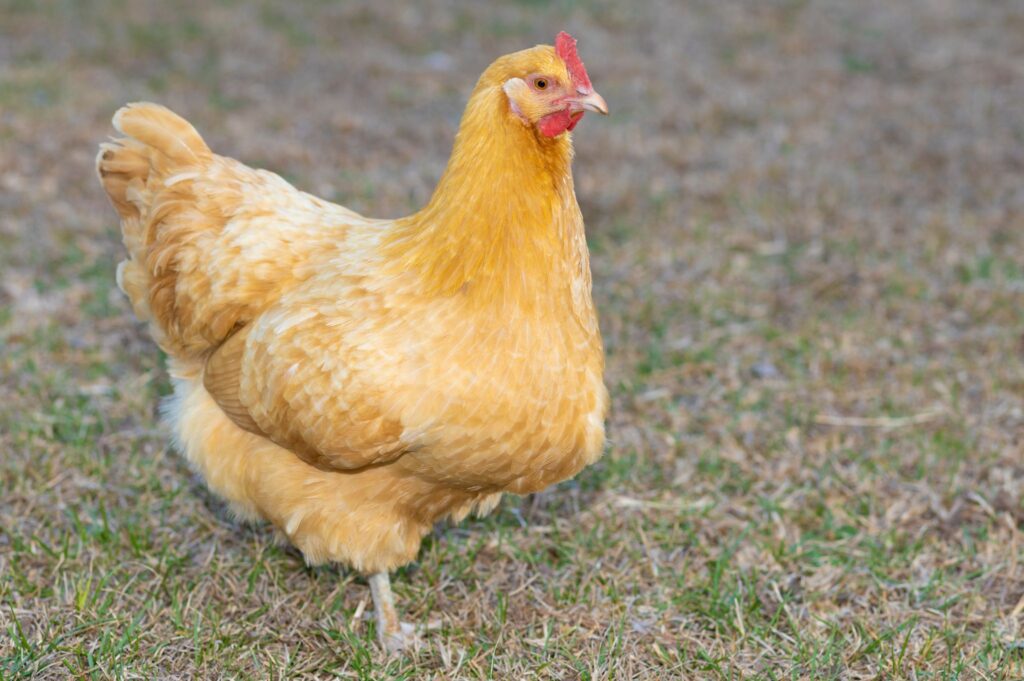
Buff Orpington Characteristics
— Color: golden buff feathers and light beaks and toes
— Dual Purpose: meat and eggs
—Large meat birds ready for meat processing by 18 weeks
— Laying Age: Approximately 22-24 weeks of age
— Eggs: 200-250 large to xl brown eggs per year.
— High tendency to become broody
— Need ample shade in hot climates due to heavy feathers.
— Livestock Conservancy Status: Graduated in 2016
Looking For Heritage Breed Chickens for Sale in NC?

